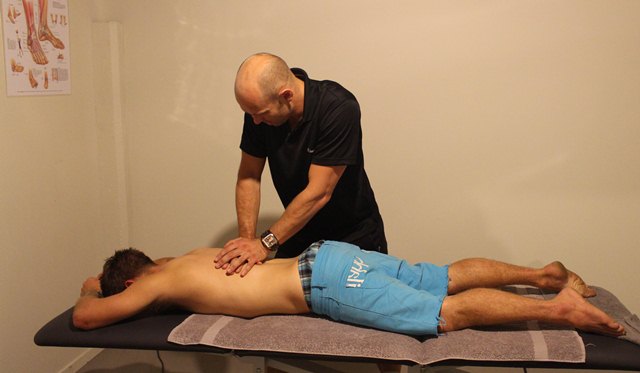Cyclist down but not out
Downhill rider Jase Connor is on the road to recovery after injury.
Looking over Taupo surrounded by New Zealand’s native bush, Jase Connor got on to his bike and rode to the start gate. He waited nervously for the race official’s countdown, raindrops dripping off the peak of his helmet. With the adrenalin pumping through his veins he hurtled down the steep muddy track weaving between trees, missing them by millimetres.

PHOTO SUPPLIED: Jase Connor
His life and downhill mountain biking career were about to change.
About 2pm on November 17 last year, Connor had an accident on his bike that left him temporarily paralysed. “On the day it was bucketing down just as the runs started. I came into a jump thinking I had enough speed but the mud from the rain slowed me, I came up short and ended up collapsing onto the handle bars at 60 kilometres per hour,” Connor, 25, says.
He ruptured an artery to his heart, damaging nerve endings in the process which left him in a hospital bed with no feeling from the waist down. It was three days before he regained feeling to his legs and another day before he could get any movement in them. “I don’t think I’ve ever been that scared in my life, the uncertainty was hard to cope with.”
After the injury Connor was restricted to the couch at his Hamilton house to rest. He watched films on the sport that harmed him, and his hunger for downhill grew.
After three months he travelled to his home track in Rotorua to see what effect the absence had had on his passion. He managed one run that day.

PHOTO: Reese Flaxman
This is the only time he has ridden his bike since the accident. A lack of control and fitness sent him back to the gym and physiotherapist for a plan to get him into peak condition.
Injuries are not uncommon in the sport or to Connor. Over the decade he has been racing downhill he has broken his wrists, collarbones, femur, ribs and fractured a bone in his neck. He has also had organ damage with a ruptured spleen.
His determination keeps him coming back for more. Frequently placing in the top 10 in most NZ events also keeps him pushing for success.
”It’s a feeling you can’t replace with anything else and I want to win national champs. I don’t think I could walk away without that.”
Eating the right food and having a healthy diet is important while on the road to recovery. Connor’s diet consists of a lot of fish, with the high protein and omega threes helping with joints and concentration, makes it invaluable to a downhill rider.
As soon as he is fit enough he plans to start training again.
The thrill-seeking high speed nature of downhill led him to the sport. “I wanted to do something more extreme than cross country mountain biking. I had seen downhill on television and thought I would give it a go,” he says.
A lot of ski fields open up for the sport in their off season. Downhill makes good use of the open tracks that the mountains provides and also the chairlifts, carting riders up the steep rock faces.
Riders can reach speeds of up to 100 kilometres per hour and clear impressive jumps reaching as far as 70 feet, all this while dodging rocks, trees and anything else on the track.
Connor says competitors are getting faster and faster every year with advances in technology. Those advances come at a price: a competition level bike can cost more than $12,000.
To Connor, it’s worth it. “Downhill is freedom. When you get on the bike nothing else matters, to me it’s a lifestyle and if I didn’t have it in my life something would be missing,” he says.




